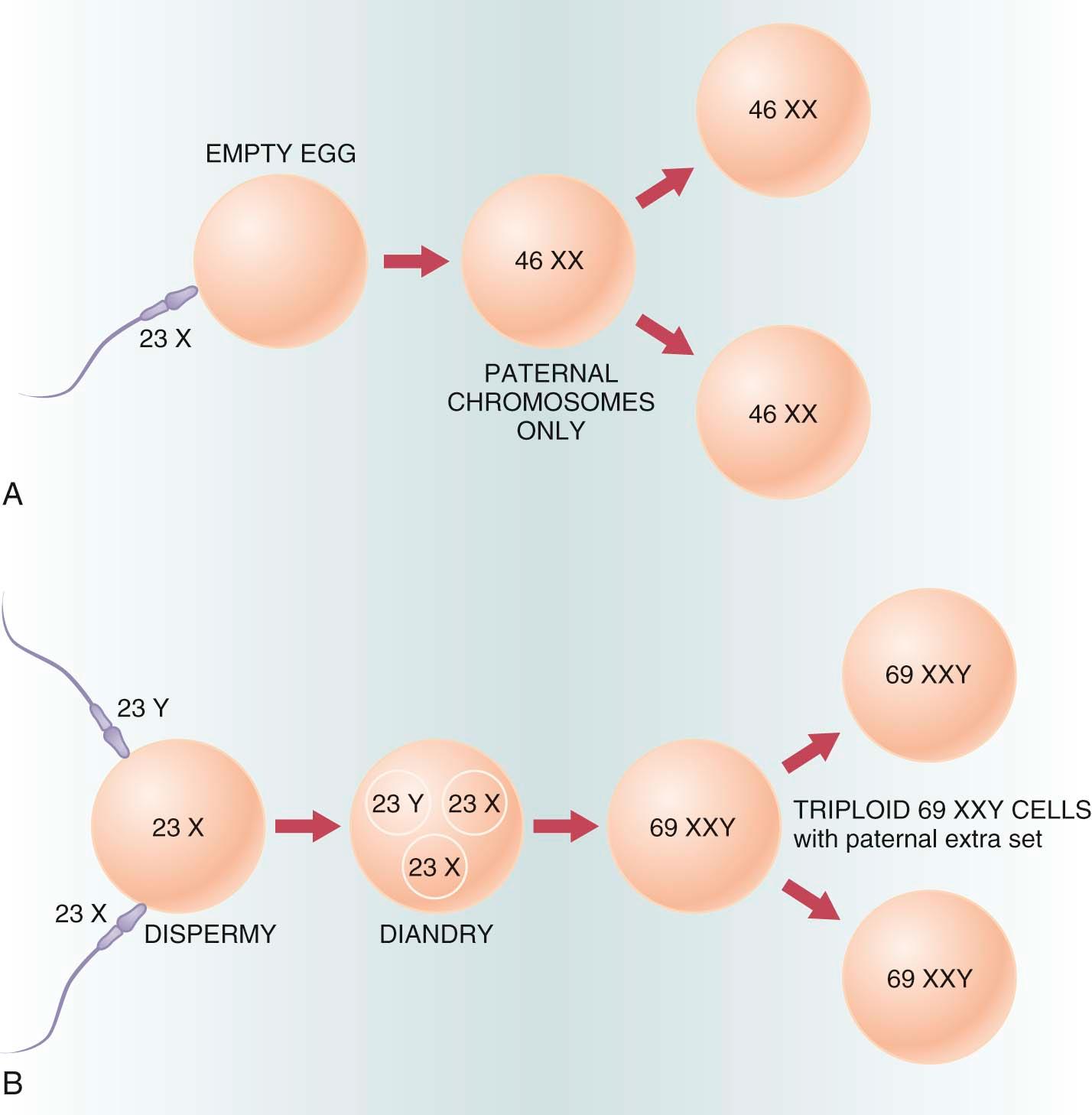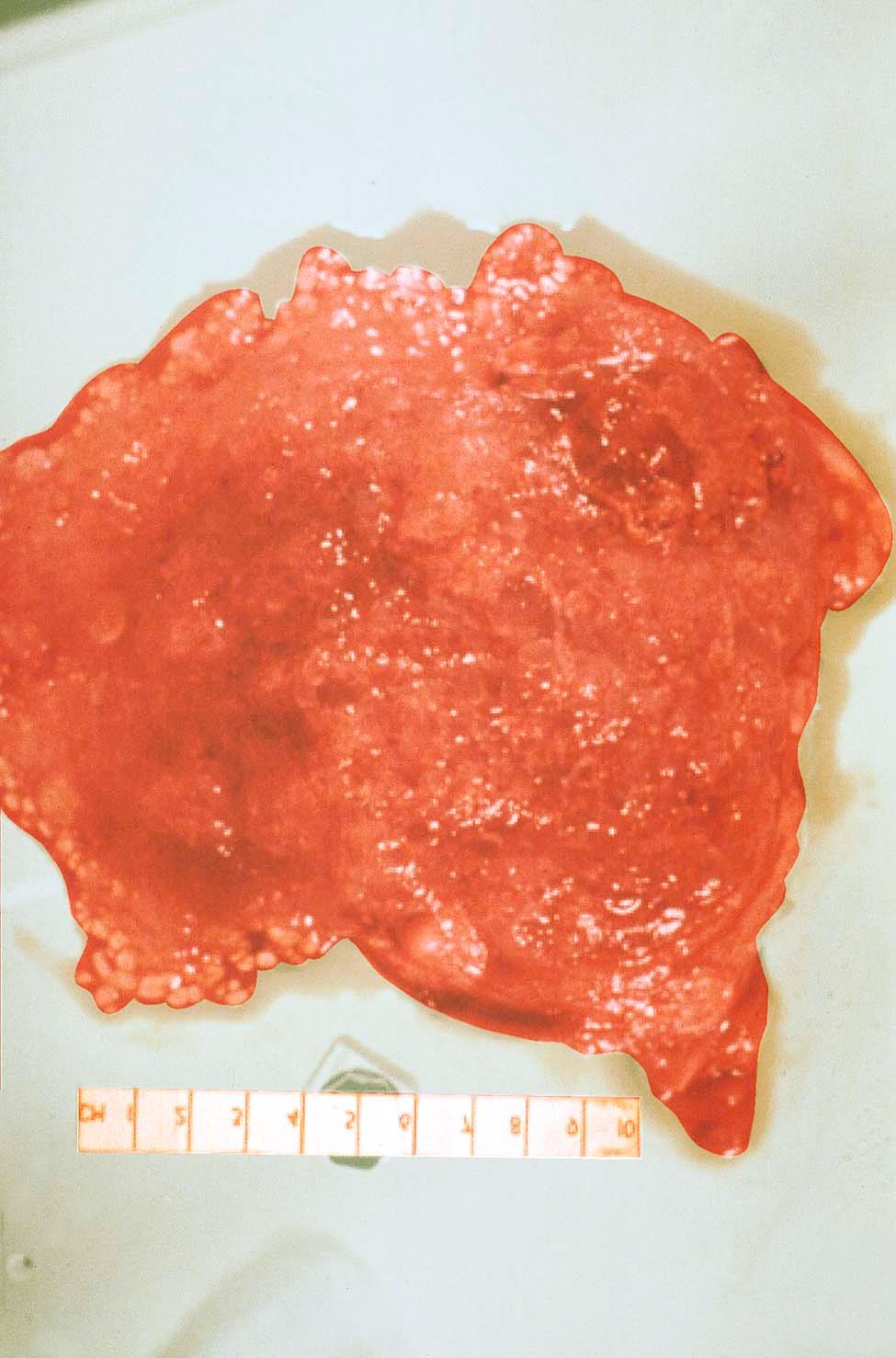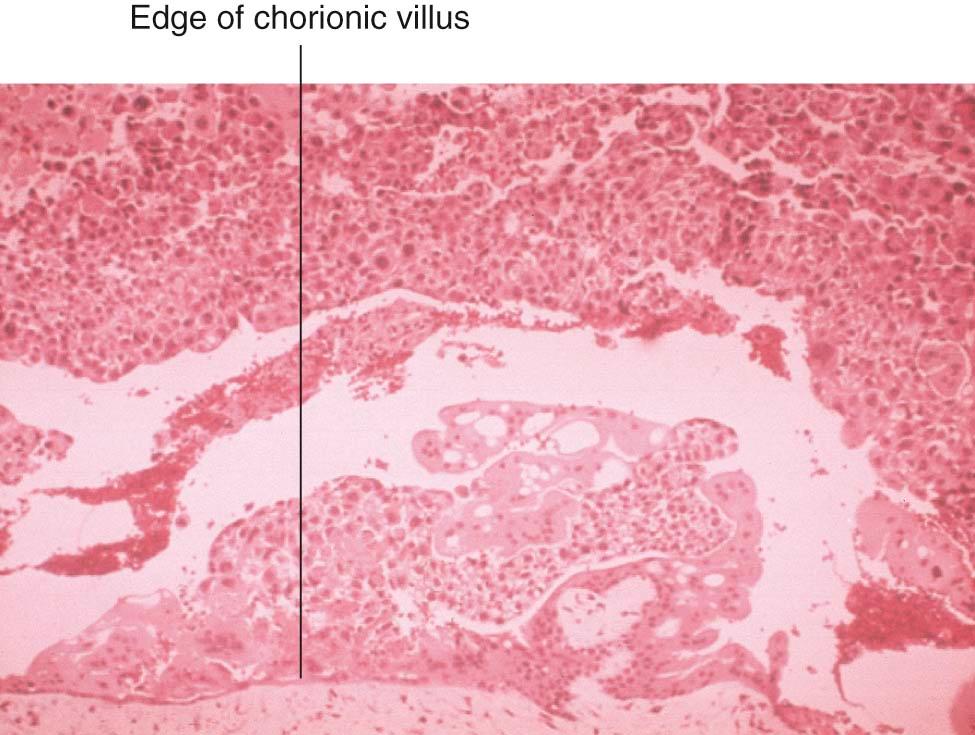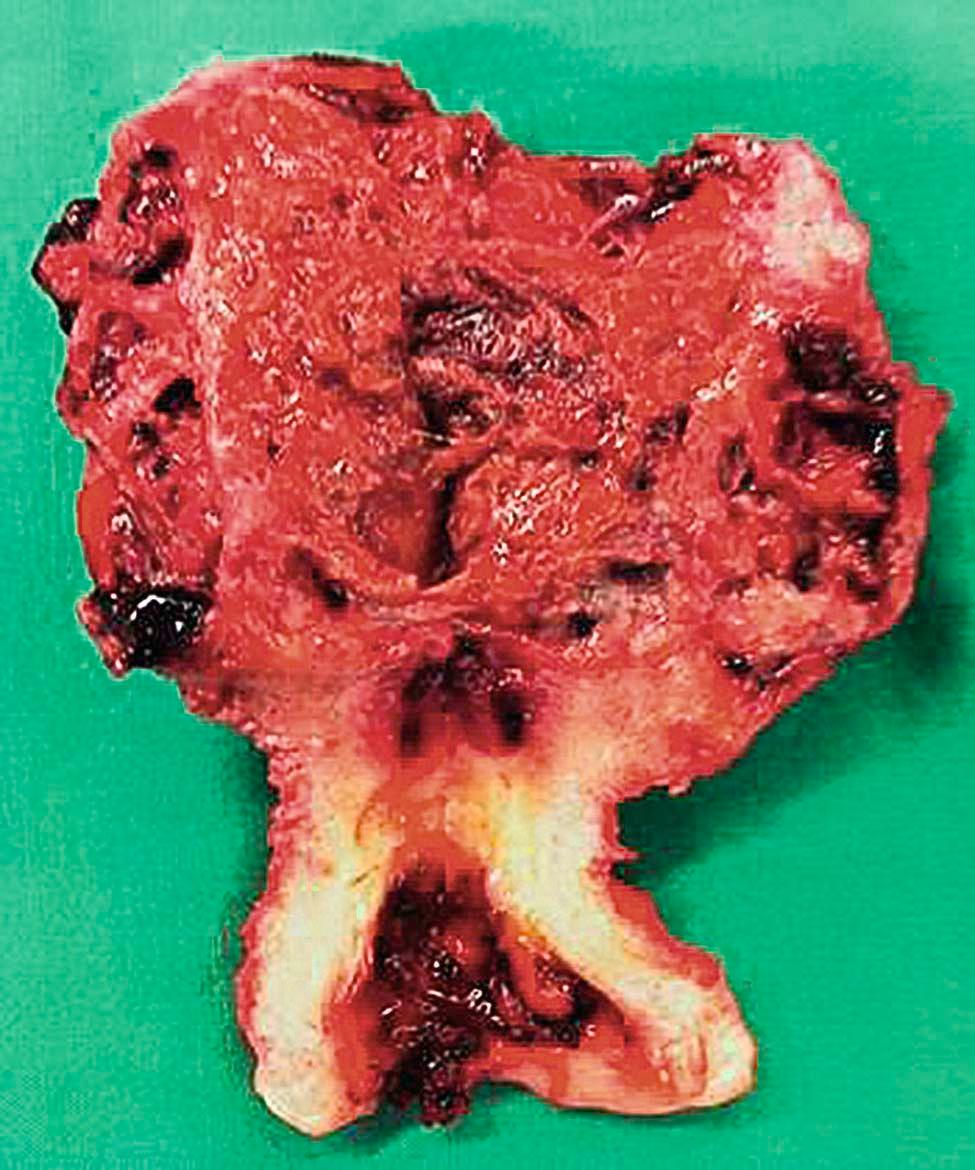Physical Address
304 North Cardinal St.
Dorchester Center, MA 02124
The majority of patients (80-90%) with gestational trophoblastic diseases (GTDs) have a benign course, and their disease spontaneously goes into remission. The benign form of GTD is called hydatidiform mole.
Most patients with hydatidiform moles present with irregular or heavy vaginal bleeding during the first or early second trimester of pregnancy, but they may also present with early-onset toxemia of pregnancy, excessive vomiting, or a uterus that is large for dates. Definitive diagnosis can usually be made with an ultrasonic scan.
The standard therapy for a hydatidiform mole is suction evacuation of the uterus followed by sharp curettage, regardless of the duration of pregnancy.
After the evacuation of a hydatidiform mole, the patient must be monitored with weekly serum assays to measure levels of the β-subunit of human chorionic gonadotropin. If the levels plateau or begin to rise, chemotherapy, usually with methotrexate or actinomycin D, will need to be instituted.
The most malignant gestational trophoblastic neoplasm is choriocarcinoma. About 50% of these tumors follow a hydatidiform mole, but they may also follow a normal pregnancy, an ectopic pregnancy, or an abortion.
Gestational trophoblastic diseases (GTDs) represent a broad spectrum of disorders that includes molar pregnancy (complete and partial), which usually goes into spontaneous remission, as well as persistent tumors designated gestational trophoblastic neoplasms (GTNs). The latter include invasive moles, which can metastasize, and the frankly malignant choriocarcinoma. GTNs are some of the rare human malignancies that are curable with chemotherapy, even in the presence of extensive metastatic disease.
Most molar pregnancies are sporadic, but a familial syndrome of recurrent hydatidiform mole has been described and is reported to be strongly associated with a mutation in the NLRP7 gene. The majority of patients (80-90%) with GTD have a benign course. This diverse group of diseases has a sensitive tumor marker, human chorionic gonadotropin (hCG), that allows accurate follow-up and assessment of the diseases.
The incidence of molar pregnancy is about 1 in every 1500 to 2000 pregnancies among white women in the United States. There is a much higher incidence among Asian women in the United States (1 in 800) and an even higher incidence among women in Asia. For example, in Taiwan, 1 in every 125 to 200 pregnancies is a molar pregnancy. The risk of the development of a second molar pregnancy is 1-3%, or as much as 40 times greater than the risk of developing the first molar pregnancy. Although the cause of GTN is unknown, it is known to occur more frequently in women younger than age 20 years and in those older than 40 years of age. It appears that GTN may result from defective fertilization, a process that is more common in both younger and older individuals. Diet may play a causative role. The incidence of molar pregnancy has been noted to be higher in geographic areas where people consume less β-carotene (a retinoid) and folic acid.
The cytogenetic analysis of tissue obtained from molar pregnancies offers some clues to the genesis of these lesions. Figure 42-1 illustrates the genetic composition of molar pregnancies.

The majority of hydatidiform moles are “complete” moles and have a 46,XX karyotype. Specialized studies indicate that both of the X chromosomes are paternally derived. This androgenic origin probably results from fertilization of an “empty egg” (i.e., an egg without chromosomes) by a haploid sperm (23 X), which then duplicates to restore the diploid chromosomal complement (46,XX). Only a small percentage of lesions are 46,XY. Complete molar pregnancy is only rarely associated with a fetus, and this may represent a form of twinning.
In the “incomplete” or partial mole, the karyotype is usually a triploid, often 69,XXY (80%). The majority of the remaining lesions are 69,XXX or 69,XYY. Occasionally, mosaic patterns occur. These lesions, unlike complete moles, often present with a coexistent fetus. The fetus usually has a triploid karyotype and is defective.
Genetic analysis of choriocarcinomas usually reveals aneuploidy or polyploidy, typical for anaplastic carcinomas.
The term gestational trophoblastic neoplasia is of clinical value because often the diagnosis is made and therapy instituted without definitive knowledge of the precise histologic pattern. GTD may be benign or malignant and nonmetastatic or metastatic ( Box 42-1 ).
The benign form of GTD is called hydatidiform mole. Although this entity is usually confined to the uterine cavity, trophoblastic tissue can occasionally embolize to the lungs. The malignant forms, called GTNs, are invasive mole and choriocarcinoma. Invasive mole is usually a locally invasive lesion, although it can be associated with metastases. This lesion accounts for the majority of patients who have persistent hCG titers following molar evacuation. Choriocarcinoma is the frankly malignant form of GTN.
Metastatic GTN can be subdivided into “good prognosis” and “poor prognosis” groups, depending on the sites of metastases and other clinical variables ( Box 42-2 ).
Urinary hCG level >100,000 IU/24 hr or serum hCG level >40,000 IU
Disease presents >4 mo from the antecedent pregnancy
Metastasis to the brain or liver (regardless of hCG titer or duration of disease)
Prior failure to respond to single-agent chemotherapy
Choriocarcinoma after a full-term delivery
hCG, Human chorionic gonadotropin.
Grossly, a hydatidiform mole appears as multiple vesicles that have been classically described as a “bunch of grapes” ( Figure 42-2 ). The characteristic histopathologic findings associated with a complete molar pregnancy are (1) hydropic villi, (2) absence of fetal blood vessels, and (3) hyperplasia of trophoblastic tissue ( Figure 42-3 ). Invasive mole differs from hydatidiform mole only in its propensity to invade locally and to metastasize.


A partial mole has some hydropic villi, whereas other villi are essentially normal. Fetal vessels are seen in a partial mole, and the trophoblastic tissue exhibits less striking hyperplasia.
Choriocarcinoma in the uterus appears grossly as a vascular-appearing, irregular, and “beefy” tumor, often growing through the uterine wall ( Figure 42-4 ). Metastatic lesions appear hemorrhagic and have the consistency of currant jelly. Histologically, choriocarcinoma consists of sheets of malignant cytotrophoblast and syncytiotrophoblast with no identifiable villi.

Most patients with hydatidiform moles present with irregular or heavy vaginal bleeding during the first or early second trimester of pregnancy ( Box 42-3 ). The bleeding is usually painless, although it can be associated with uterine contractions. In addition, the patient may expel molar “vesicles” from the vagina and occasionally may have excessive nausea, even “hyperemesis gravidarum.” Irritability, dizziness, and photophobia may occur, because some patients experience preeclampsia. Patients may occasionally exhibit symptoms related to hyperthyroidism, such as nervousness, anorexia, and tremors.
Bleeding in the first half of pregnancy
Lower abdominal pain
Toxemia before 24 wks gestation
Hyperemesis gravidarum
Uterus “large for dates” (only 50% of cases)
Absent fetal heart tones and fetal parts
Expulsion of vesicles
Become a Clinical Tree membership for Full access and enjoy Unlimited articles
If you are a member. Log in here